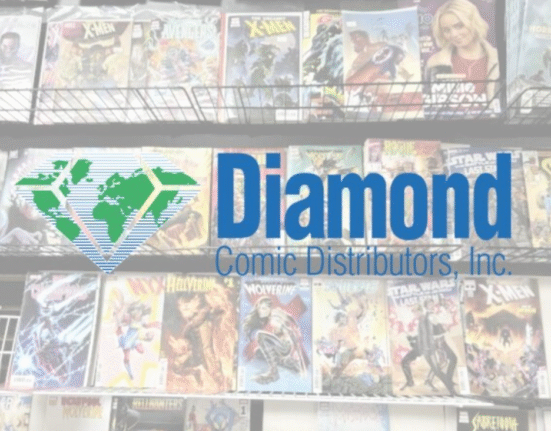If there is one sector that seems immune to tariff shocks and economic uncertainty, it’s music royalties and copyrights. Unlike physical goods, many of which are manufactured by China – the country bearing the brunt of the US’s new tariff policy – music rights are governed by intellectual property. The sector’s ability to generate stable cashflow, even in downturns, is a strong draw, with music streaming driving audience engagement.
But that doesn’t mean investors and other players aren’t feeling nervous.
“The climate makes everybody uneasy, and unease makes investors sit on their hands or demand higher rates of returns,” said Rob Law, a partner at Shot Tower Capital, a Baltimore-based investment bank in the media sector specializing in the music industry. “It’s very naïve to say it isn’t having an impact. Anyone who tells you they know what is going on is to be taken with a grain of salt. You don’t know. It’s a big creative uncertainty.”
The investor angst follows a period of brisk deal volume for the music royalties and copyrights sector. According to Shot Tower, which advised music catalog giant Hipgnosis (now Recognition Music Group) on its sale to Blackstone last year for nearly $1.6 billion, 2024 was a milestone year. Though fewer deals were recorded, the overall dollar volume peaked at $8 billion, thanks to multiple $1 billion deals. That figure, which only takes into account deals worth more than $20 million, encompassed not only private equity transactions, but those led by strategics such as Sony or Universal Music Group.

Other major transactions that made the grade last year included Hellman & Friedman’s acquisition of a substantial stake in performing rights organization Global Music Rights, valuing the company at $3.3 billion, and New Mountain Capital‘s $1.7 billion buyout of Broadcast Music, a top music licensing agency.
Private equity interest in individual artists’ or bands’ catalogs remained strong. Standout deals from 2024 ranged from Pophouse Entertainment scooping up the music catalog of iconic recording artists KISS for $300 million to Carlyle-backed Litmus Music purchasing singer/songwriter Randy Newman’s music catalog, which include his soundtrack work for Disney franchises such as Toy Story, Cars and Monsters Inc.
Small opportunities
Yet countering the big deals is a surge in smaller transactions focused on lesser-known artists.
It’s a trend that Michael Poster, music acquisitions and financing chair at law firm Michelman & Robinson, has noticed recently. While he didn’t disclose the details, there are several pending deals he knows about involving high-profile artists and private equity firms and/or PE-backed companies.
“When you have a deal that’s going to trade at $100 million, you’re going to have a lot of interest from larger investors and funds that will drive the price up,” said Poster, who recently co-represented Johnny McDaid, a Grammy Award-nominated songwriter and musician, in the sale of his publishing catalog to Concord Music Group, which is backed by Apollo Global Management. “But for every one of those big deals, there are scores of under- to $10 million deals that are in the marketplace where there’s less competition. You have more supply and less demand. The [buyers] know they can get [better] pricing terms [and it’ll be] less heavily negotiated.”


Law concurred: “There’s only so many marquee artists in the world. I think it’s a timing deal right now. There’s just so many smaller deals out there.”
However, according to Sherrese Clarke, CEO and founder of HarbourView Equity Partners, a Newark, New Jersey-based PE firm that has been at the forefront of music investments since its 2021 launch, these smaller deals are not an anomaly or a new trend but rather the norm. It’s the deals that get the most headlines that are the aberrations.
“On average, we’re doing deals from $20 million to $50 million,” said Clarke. “That is the bulk of the business. We have done deals much larger and much smaller than that but that is the average deal size. There are very few deals higher than that because of the way music is built. The assets are born in fragmented pieces with multiple songwriters and multiple artists participants.
“Most sellers have anywhere from $500,000 to $2 million income on average per year. We have built an institutional franchise that has scaled that into more than $2 billion of assets buying deals in that size range.”


Backed by Apollo and most recently, KKR, HarbourView has bought more than 60 music catalogs to date. Though HarbourView’s diverse portfolio of music catalog assets include famous artists such as Fleetwood Mac’s Christine McVie, Pat Benatar and Nelly, it also features less well-known names with keen audience engagement who are “outperforming every metric they have.” It is from this dynamic that PE firms such as HarbourView reap the bountiful rewards and returns of their investments.
To only gravitate toward what some would call marquee artists is to “ignore so many great pockets of audience,” added Clarke. “Because we are centering around audience, we are more focused on where we can identify deep audience engagement and find high value more than anything else.”
Developing talent
For some investment firms, the new and unexplored gems are in the developing markets, such as Latin America or Africa. “The streaming penetration is not as intense as here,” said Law. Another draw are the demographics, with “more young people in those areas.”
HarbourView has been bullish about regional Spanish language music, having made numerous investments in the genre. An example includes Puerto Rican recording artist Luis Fonsi, who sold his catalog to HarbourView in early 2022.
“That has been one of the best performing assets for us,” said Clarke. “When we invested in these titles and artists, many traditional investors didn’t know them nor did they have broad global name recognition, but it didn’t mean they weren’t selling out stadiums and arenas with audiences singing every word. We are audience agnostic, respecting the engagement of each and every global audience and the artists they love.”
There are other reasons why PE firms are jumping on the smaller deal bandwagons, especially during a volatile economy.
“Most of these buyers are using leverage and that helps with the returns,” noted Poster. “For the buyers, the asset they’re acquiring has not been very well managed. What they’re looking to do is to improve the performance of the catalog through a combination of better collection of revenues and more activist management and greater sales and marketing efforts.”
Law broke it down further. “Pricing tends to be better,” he said. “You could get better returns on a smaller scale.”
Committed fans
Despite the malaise spreading throughout the private equity landscape since the start of the year, there are strong signs that investors are fully committed to the music royalties and copyrights space.
For instance, in early March, Aquarian Holdings, an investment firm founded by ex-Guggenheim Partners executive Rudy Sahay, teamed up with investment firm Raven Capital to form Raven Music Partners, a venture focused on acquiring music catalogs. And, earlier in April, GoldState Music, a music rights investment platform, snagged $500 million from Northleaf Capital Partners and Ares Management.
Navigating the current tariff turmoil, regardless of whether assets are directly affected, may boil down to diversification and thinking outside the box.
“We’re going to see greater levels of creativity in deal structures,” said Poster. “Things that start to look more like partnerships or joint ventures – something that doesn’t look like a complete binary cash for asset sales. We’re going to see more activity where music is an asset but not the primary asset, such as film and TV studios and video game companies, all of whom own significant music assets, but their assets are ancillary to the core IP of that business.”
The outlook for this space is positive.
“I think there’s a lot of well-financed groups that are actively looking to do deals and there are a lot of assets that are looking to [be acquired],” said Law. “It’s probably going to be a year of smaller deals compared to last year, even if a single large deal like Billy Joel comes to market.”







